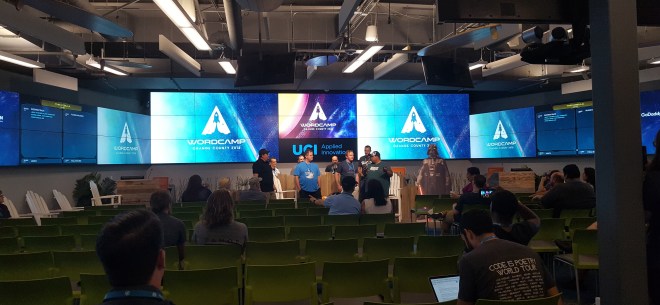As many know, for the past 6 months or so, I’ve been slowly improving some of the IndieWeb tools and workflow I use to own what I’m reading both online and in physical print as well as status updates indicating those things.
[1][2][3]
Since just before IndieWebCamp LA, I’ve been working on better ways to own the articles I’ve been reading and syndicate/share them out to other social platforms. The concept initially started out as a simple linkblog idea and has continually been growing, particularly with influence from my attendance of the Dodging the Memory Hole 2016: Saving Online News conference at UCLA in October. Around that same time, it was announced that Pinterest was purchasing Instapaper and they were shutting down some of Instapaper’s development and functionality. I’ve been primarily using Pocket for several years now and have desperately wanted to bring that functionality into my own site. I had also been looking at the self-hostable Wallabag alternative which is under heavy active development, but since most of my site is built on WordPress, I really preferred having a solution that integrated better into that as a workflow.
Enter PressForward
I’ve been looking closely at PressForward for the past week and change as a self-contained replacement for third party services like Pocket and Instapaper. I’ve been looking around for this type of self-hosted functionality for a while.
PressForward was originally intended for journalists and news organizations to aggregate new content, add it to their newsroom workflow, and then use it to publish new content. From what I can see it’s also got a nice following in academia as a tool for aggregating content for researchers focused on a particular area.
It only took a minute or two of looking at PressForward to realize that it had another off-label use case: as a spectacular replacement for read-later type apps!
In an IndieWeb fashion, this fantastic WordPress plugin allows me to easily own private bookmarks of things I’d like to read (PressForward calles these “Nominations” in keeping with its original use case). I can then later read them on my own website (with Mercury f.k.a Readability functionality built in), add commentary, and publish them as a read post. [Note: To my knowledge the creators of PressForward are unaware of the IndieWeb concept or philosophies.]
After some playing around for a bit and contemplating several variations, configurations, and options, I thought I’d share some thoughts about it for others considering using it in such an off-label manner. Hopefully these may also spur the developers to open up their initial concept to a broader audience as it seems very well designed and logically laid out.
Examples
The developers obviously know the value of dogfooding as at least two of them are using it in a Pocket-like fashion (as they many not have other direct use-cases).
Pros
PressForward includes a beautiful, full built-in RSS Feed Reader!
This feature alone is enough to recommend using it even without any other feature. I’ve tried Orbit Reader and WhisperFollow (among others) which are both interesting in their own rights but are somewhat limited and have relatively clunky interfaces. The best part of WhisperFollow’s premise is that it has webactions built in, but I suspect these could easily be added onto PressForward.
In fact, not just hours before I’d discovered PressFoward, I’d made this comment on the WordPress Reader Refresh post announcing the refresh of WordPress.com’s own (separate) reader:
Some nice visual changes in this iteration. Makes it one of the most visually pretty feed readers out there now while still maintaining a relatively light weight.
I still wish there were more functionality pieces built into it like the indie-reader Woodwind.xyz or even Feedly. While WordPress in some sense is more creator oriented than consumption oriented, I still think that not having a more closely integrated reader built into it is still a drawback to the overall WordPress platform.
Additionally,
- It’s IndieWeb and POSSE friendly
- It does automatic link forwarding in a flexible/responsible manner with canonical URLs
- Allows for proper attributions for the original author and content source/news outlet
- Keeps lots of metadata for analyzing reading behavior
- Taggable and categorizable
- Allows for comments/commenting
- Could be used for creating a linkblog on steroids
- Archives the original article on the day it was read.
- Is searchable
- Could be used for collaboration and curation
- Has Mercury (formerly known as Readability) integrated for a cleaner reading interface
- Has a pre-configured browser bookmarklet
- Is open source and incredibly well documented
- One can count clicks to ones’ own site as the referer while still pushing the reader to the original
- Along with other plugins like JetPack’s Publicize or Social Networks Auto-Poster, one can automatically share their reads to Twitter, Facebook, or other social media silos. In this case, you own the link, but the original publisher also gets the traffic.
Cons
No clear path for nominating articles on mobile.
This can be a dealbreaker for some, so I’ve outlined a pretty quick and simple solution below.
No direct statistics
Statistics for gauging ones’ reading aren’t built in directly (yet?), but some scripts are available. [4][5][6]
No larger data aggregation
Services like Pocket are able to aggregate the data of thousands of users to recommend and reveal articles I might also like. Sadly this self-hosted concept makes it difficult (or impossible) do have this type of functionality. However, I usually have far too much good stuff to read anyway, so maybe this isn’t such a loss.
Suggested Improvements
Adding the ability to do webactions directly from the “Nominated” screen would be fantastic, particularly for the RSS reader portion.
Default to an unread view of the current “All Content” page. I find that I have to filter the view every time I visit the page to make it usable. I suspect this would be a better default for most newsrooms too.
It would be nice to have a pre-configured archive template page in a simple linkblog format that filters posts that were nominated/drafted/published via the Plugin. This will prevent users from needing to create one that’s compatible with their current theme. Something with a date read, Title linked to the original, Author, and Source attribution could be useful for many users.
A PressForward Nomination “Bookmarklet” for Mobile
One of the big issues I came up against immediately with PressForward is ease of use on mobile. A lot of the content I read is on mobile, so being able to bookmark (nominate) articles via mobile or apps like Nuzzel or Twitter is very important. I suspect this may also be the case for many of their current user base.
Earlier this year I came across a great little Android mobile app called URL Forwarder which can be used to share things with the ubiquitous mobile sharing icons. Essentially one can use it to share the URL of the mobile page one is on to a mobile Nomination form within PressForward.
I’d suspect that there’s also a similar app for iOS, but I haven’t checked. If not available, URL Forwarder is open source on Github and could potentially be ported. There’s also a similar Android app called Bookmarklet Free which could be used instead of URL Forwarder.
PressForward’s built in bookmarklet kindly has a pre-configured URL for creating nominations, so it’s a simple case of configuring it. These details follow below for those interested.
Configuring URL Forwarder for PressForward
- Open URL Forwarder
- Click the “+” icon to create a filter.
- Give the filter a name, “Nominate This” is a reasonable suggestion. (See photo below.)
- Use the following entry for the “Filter URL” replacing
example.com with your site’s domain name: http://example.com/wp-content/plugins/pressforward/includes/nomthis/nominate-this.php?u=@url
- Leave the “Replaceable text” as “@url”
- Finish by clicking on the checkmark in the top right corner.
Simple right?
Nominating a post via mobile
With the configuration above set up, do the following:
- On the mobile page one wants to nominate, click the ubiquitous “share this” mobile icon (or share via a pull down menu, depending on your mobile browser or other app.)
- Choose to share through URL Forwarder
- Click on the “Nominate” option just created above.
- Change/modify any data within your website administrative interface and either nominate or post as a draft. (This part is the same as one would experience using the desktop bookmarklet.)
What’s next?
Given the data intensity of both the feed reader and what portends to be years of article data, I’m left with the question of hosting it within my primary site or putting it on a subdomain?
I desperately want to keep it on the main site, but perhaps hosting it on a subdomain, similar to how both Aram Zucker-Scharff and James Digioia do it may be better advised?
I’ve also run across an issue with the automatic redirect which needs some troubleshooting as well. Hopefully this will be cleared up quickly and we’ll be off to the races.















